Environment and Energy

Rig Count Increases as Oil Price Tops $70 Per Barrel
Written by Peter Wright
May 22, 2018
With the price of oil now above $70 per barrel, the prospects appear positive for oil country tubular goods. But economic and political tensions on a global scale will keep energy prices uncertain.
The spot price of West Texas Intermediate (WTI) broke through $70 on May 7 for the first time since Nov. 27, 2014. The price remained above $70 for six of seven working days to close at $71.01 on May 14. The total number of operating rigs exploring for oil and gas increased by 24 in the first two weeks of May to reach 1,046 on May 18. Nineteen of the 24 were in oil exploration. The prices of oil and natural gas drive the consumption of energy-related steel products including oil country tubular goods, pipe fittings and well head equipment, among others. Welded tubular goods (not including OCTG) consumed about 5.5 million tons of hot rolled sheet in 2017.
On May 5, the CME Group published an article with the following conclusions: “U.S. oil production may steadily rise to over 12 million barrels a day by the second half of 2019, so long as the 12- to 24-month futures price of oil remains around $55 per barrel or higher. Note that it is the medium-term futures price, not the spot price, that will drive U.S. production higher. If Saudi Arabia and Russia resume full production as oil approaches their price targets, the combination of U.S., Saudi and Russian oil production increases may serve as a powerful limit on further oil price increases. The upside wild card is the Mideast oil price risk premium, currently estimated at $7 per barrel, which could go higher if Saudi-Iran tensions worsen. The downside wild card is the sustainability of healthy global growth, which would be endangered if a full-scale tit-for-tat trade war broke out.”
Figure 1 shows historical oil and gas prices from January 2000 through May 14, 2018. Our price and inventory data come from the Energy Information Administration (EIA), which reported that the price of natural gas at the Henry Hub in Louisiana through May 9 at $2.76 has changed by only one cent in four months. There was a brief spike in the price of gas in January when the price reached $4.28 on Jan. 5. (Note, Figure 1 shows only one result for the mid-point of each month.) That was the first time for gas to break through $4.00 since November 2014.
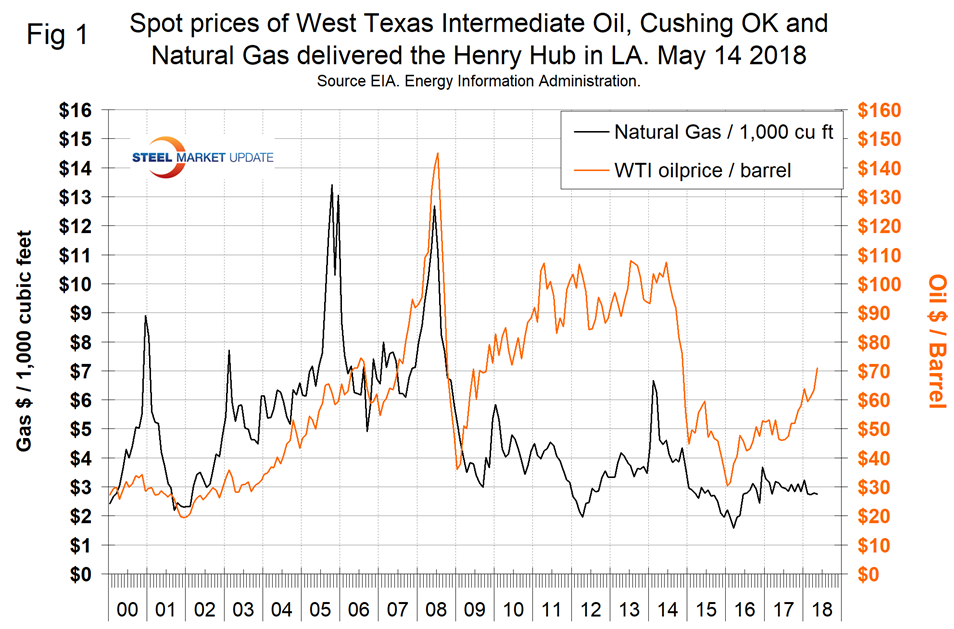
Stocks of crude oil in the U.S. didn’t changed much in the 10 weeks through May 11, but are down by over 114 million barrels year over year. Figure 2 shows the inventory level, including the strategic petroleum reserve and the year-over-year change.
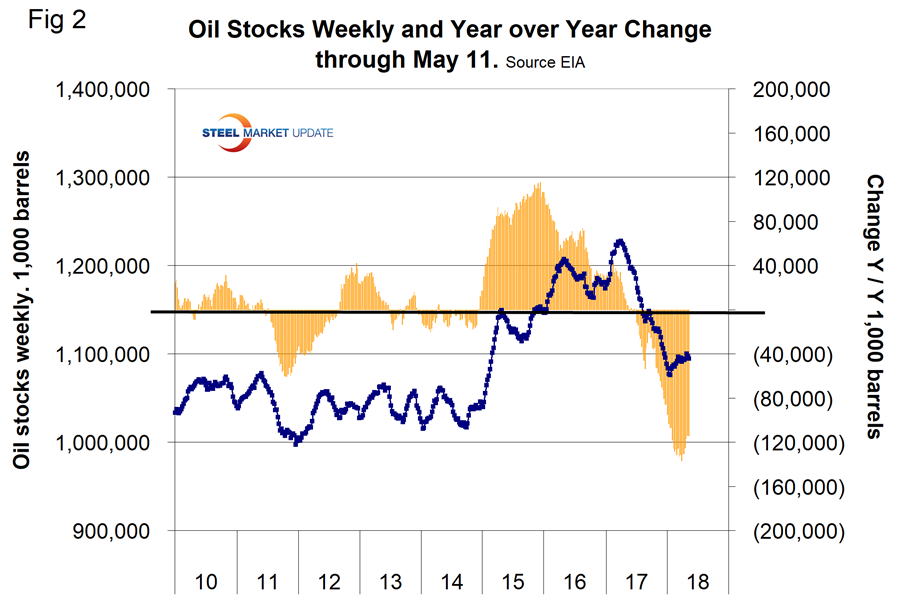
Figure 3 breaks total crude inventory into the working portion and the strategic petroleum reserve. Total inventories declined every month for almost a year, but are still historically high.
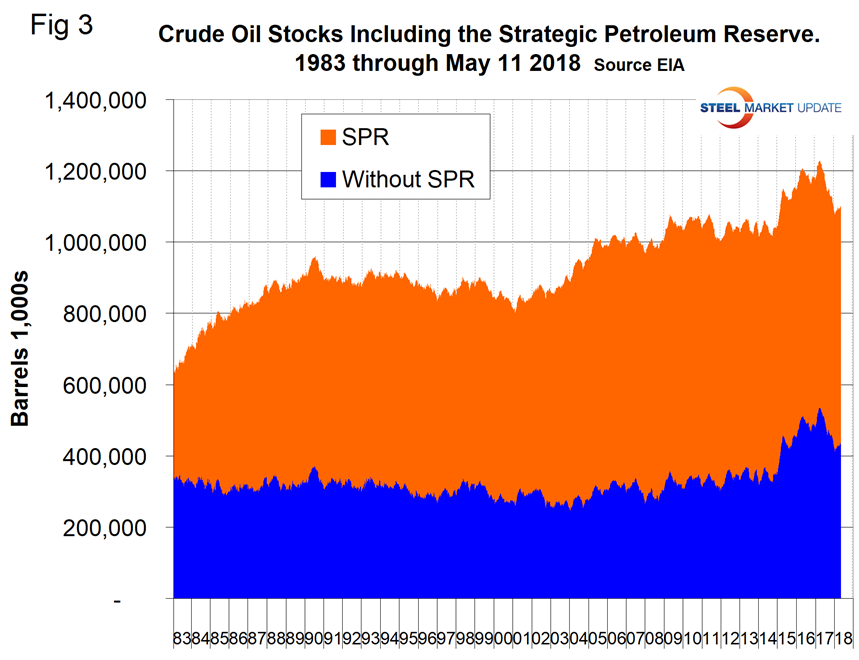
The total number of operating rigs in the U.S. on May 18 was 1,046, up from 1,008 in our last update on April 11 and the highest since March 27, 2015. Figure 4 shows the total number of operating rigs in the U.S. and the weekly change.
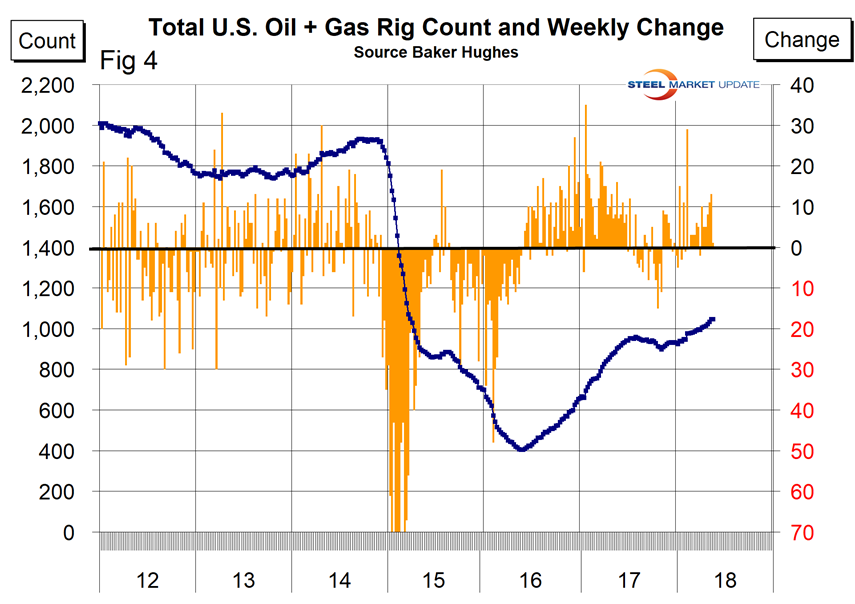
The oil rig count had a low point of 316 on June 27, 2016, and stood at 844 on May 18, 2018. The U.S. gas rig count rose from its low point of 81 on Aug. 5, 2016, to 200 on May 18. The year-over-year growth rate of total U.S. operating rigs was 19.1 percent in the latest data. Figure 5 shows the Baker Hughes U.S. Rotary Rig Counts for oil and gas equipment in the U.S. (explanation below).
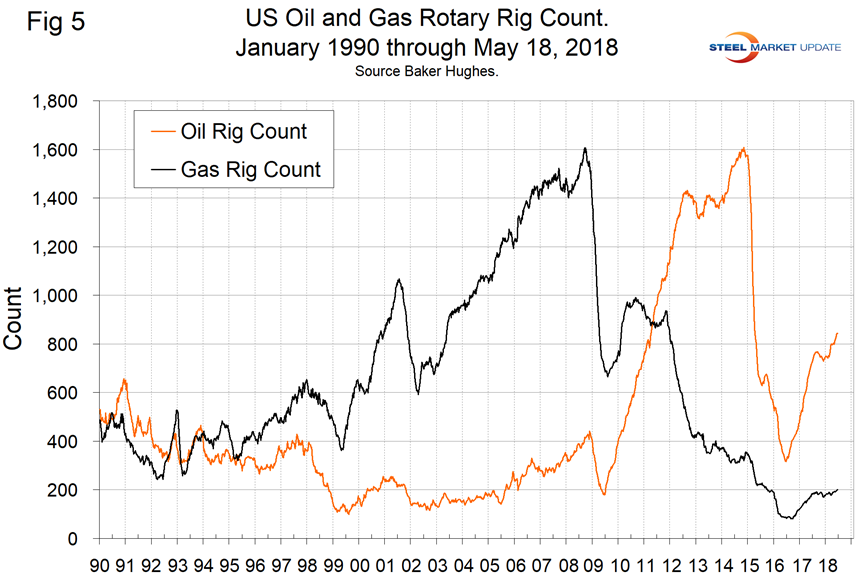
On a regional basis in the U.S., the big three states for operating rigs are Texas, Oklahoma and North Dakota. Figure 6 shows the land rig count in those states since 2000 and that non-conventional drilling in North Dakota has declined by 65 percent from its heyday in late 2014. This is not as bad as it sounds because previously drilled and capped wells are being put back on stream. In fact, the North Dakota active count has increased by 12 since the beginning of March.
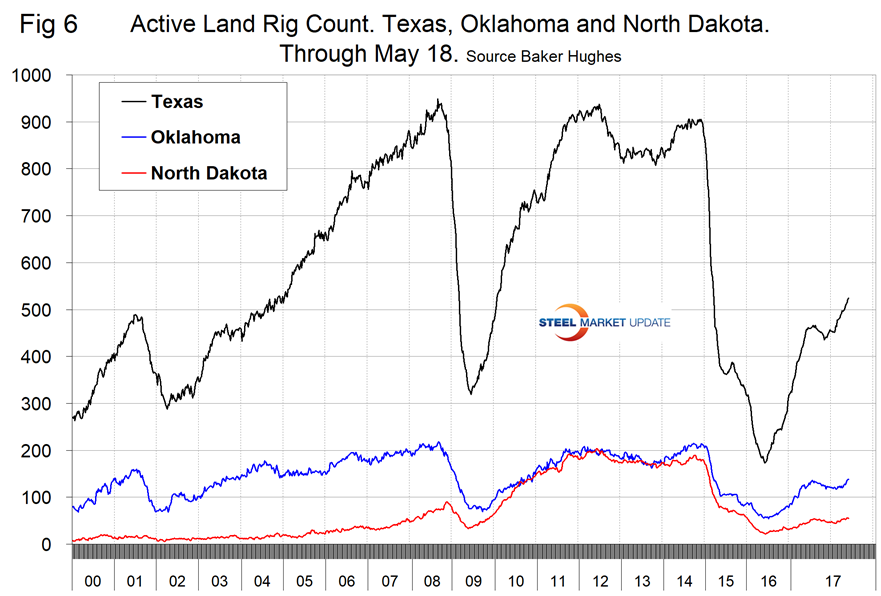
Figure 7 illustrates the monthly U.S. oilfield production of crude from January 1970 through February 2018 (latest data available). Revisions to recent data resulted in December 2017 being declared the highest ever month of production, breaking a record that stood since November 1970. In December 2017, production was 310.729 million barrels, declining to 287.379 million in February.
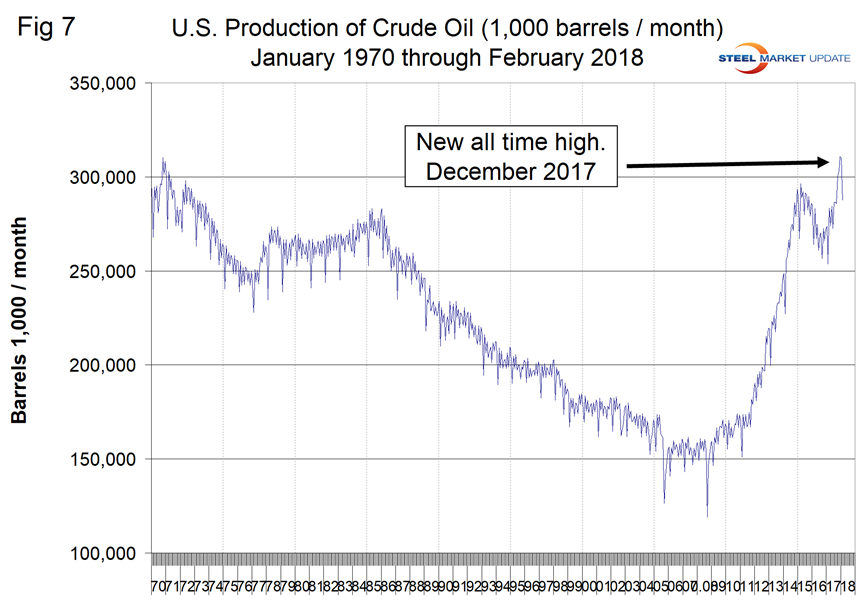
Figure 8 compares oil production and the oil rig count and shows how the increase in exploratory wells drove production from 2009 through late 2014 when the oil price collapsed. The subsequent decline in production was much less marked and is again increasing. Our take on this is that the huge increase in exploratory oil rigs beginning in 2009 may have been an anomaly and that we won’t see a repeat of the number operating in 2014 for a very long time.
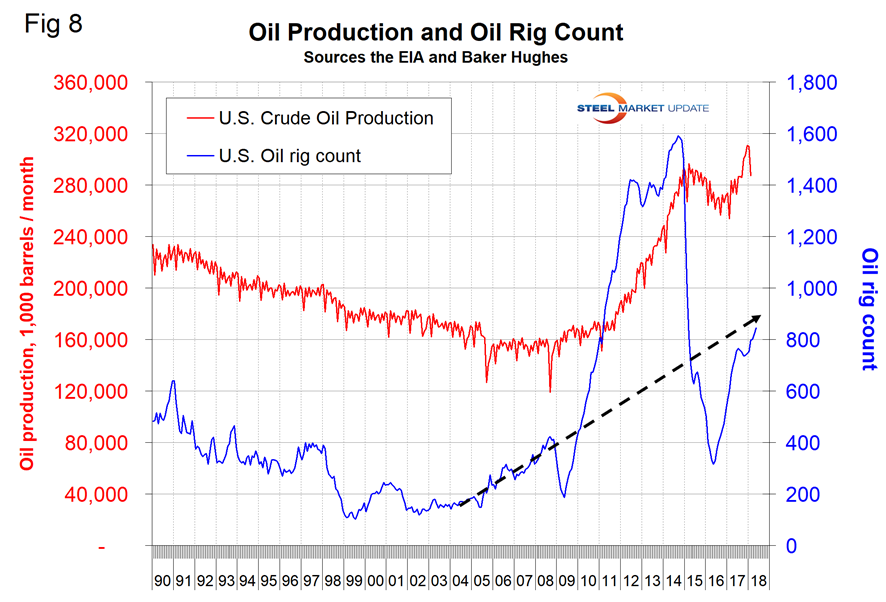
Baker Hughes Rotary Rig Count: This is a weekly census of the number of drilling rigs actively exploring for or developing oil or natural gas in the United States. Rigs are considered active from the time they break ground until the time they reach their target depth and may be establishing a new well or sidetracking an existing one. The Baker Hughes Rotary Rig count includes only those rigs that are significant consumers of oilfield services and supplies.

Peter Wright
Read more from Peter WrightLatest in Environment and Energy

Global Steel Climate Council certifies eight SDI, ASA HR products
GSCC certifies eight products from Steel Dynamics and Arkansas Steel Associates.

June energy market update
In this Premium analysis we examine North American oil and natural gas prices, drill rig activity, and crude oil stock levels. Trends in energy prices and rig counts serve as leading indicators for oil country tubular goods (OCTG) and line pipe demand.

EPA deregulation proposals win praise from steel advocates
Two industry groups are applauding two EPA proposals that would support domestic steel production.

Met coal receives critical materials status
The US Department of Energy (DOE) adds metallurgical coal to the nation’s list of Critical Materials, following its designation by US Secretary of Energy, Chris Wright’s announcement on May 22.

May energy market update
An analysis of the North American energy market in May.
